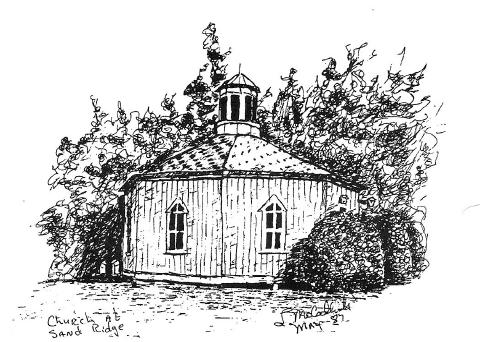
Larry McCallister, who died at the age of 75, created
this sketch drawing of original historic Albert's Chapel
By Bob Weaver 2019
Albert's Chapel United Methodist Church - "The Little Round Church" - at Sand Ridge celebrated its 120th anniversary Sunday, the only building in Calhoun on the National Register of Historic Places.
The church has a history of good times and bad, reading like a classic novel.
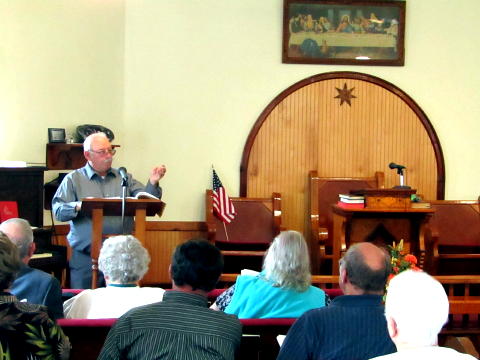
Donald Little teaches Sunday School Class
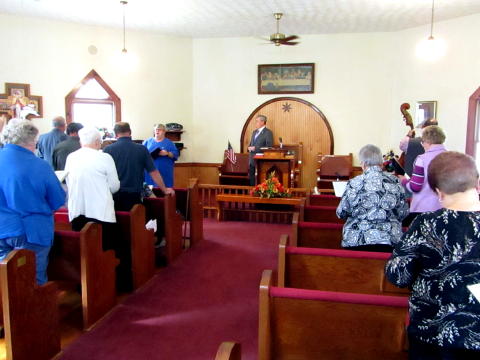
Pastor David Weaver leads congregational song
Former United Methodist Pastor Rick Swearingen from Boone County returned for the celebration with Pastor David Weaver, including a "dinner on the ground" after morning services.
Rev. Weaver is a descendant of the Poling family, founders of the church.
Perhaps most remembered during the day were the "old souls" who were faithful comers to the Sand Ridge church, many long gone, with Crummies Creek resident Sam Dillon, about 90, among the current old-timers attending.
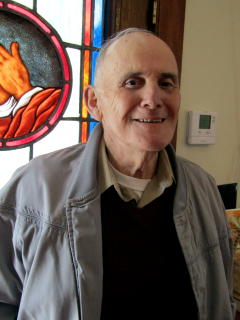
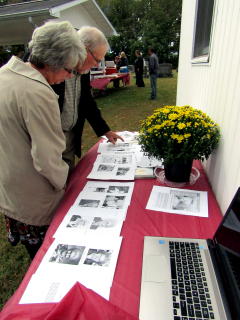
Sam Dillon of Crummies Creek was oldest old-
timer, visitors come to Table of Memories
Adjacent the church is a cemetery that holds several generations of area families, reading like a who's who of Calhoun history.
It was a church that the late Rev. Glendon McKee devoted much of his life, being instrumental in restoring the historic structure with the help of parishioners before he passed.
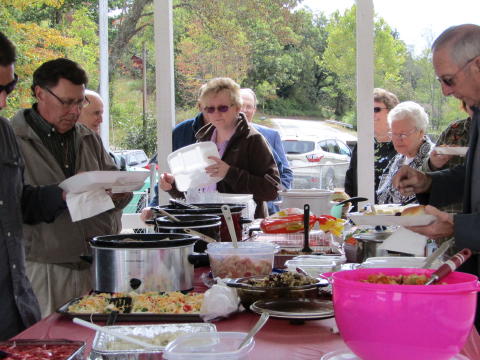
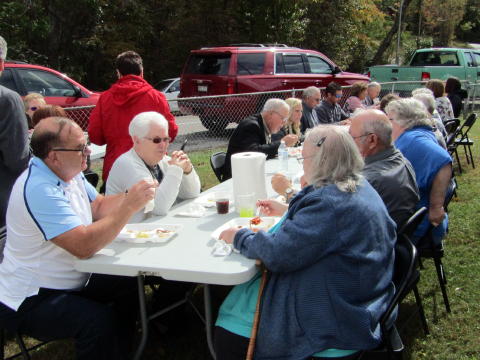
Group enjoys outside dinner next to church
A LOOK BACK AT CHURCH HISTORY
Compiled by Church Members
Alberts Chapel is like a lighthouse set on a hill beckoning worshipers and tourists to come and see. The church is distinguished as being s the only circular house of worship in West Virginia. The property was deeded by Asbury and Matilde Poling to the church trustees on August 21, 1902. Before the church was built a small cemetery was all that was located on the property.
The church was named in honor of Albert Poling, who became interested in building the church when he was 25 years old. The church is often referred to as "the little round church" or the octagonal church". James Kinder, the first pastor of the church, influenced Albert Poling to join the Methodist conference.
Many different stories have been told as to why the church was built in the unusual shape. We do not know which one influenced Albert's decision to build the round church. The church is shaped with eight distinct sides. One story says that Albert and Asbury Poling saw buildings constructed in this manner during their travels in the Spanish American War.
It was also told that Matilda Poling, Asbury's wife, was influenced by a sermon she heard preached using the text Isaiah 40:22, which states that "It is he that sitteth upon the circle of the earth, and the inhabitants thereof are as grasshoppers: that stretcheth out the heavens as a curtain, and spreadeth them out as a tent to dwell in." Local folklore's version is that the church was built circular so there were no corners for the devil to hide in.
Another says that the shape was to seat as many people as possible. Whatever the reason for the church's design, it is truly a unique building.
Charley Poling is credited with the completing the plans for the church. With the plans complete, in 1898 Albert and others began to cut the lumber for the church. Wesley Poling donated the timber and a sawmill to saw the lumber. Most of the carpenter work was done by Charley Poling, brother of Wesley and by Nicholas, Wesley's son.
Before Christmas the same year the church was built, a dedication service was held by Dr. Hess, the presiding Elder. There was a debt for the church in the amount of $300. Albert went to the mountains
to work and pay it off. When services began, James Kinder was the first pastor, and Letcher Ball was the class leader.
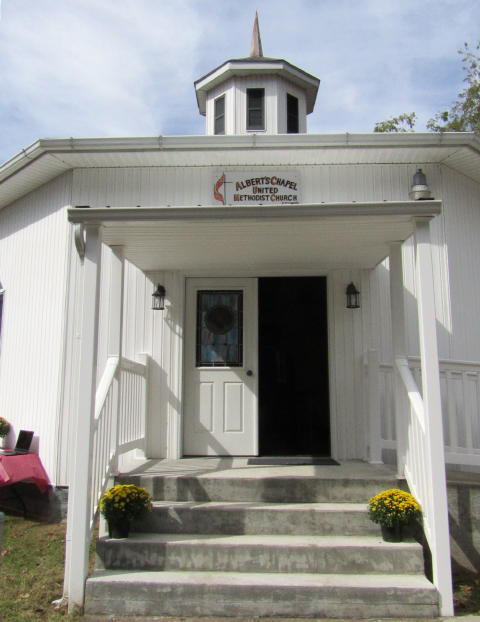
After the beatings of Reverend Scott Williams and Albert and Wesley Poling in 1910, the church attendance declined. It continued to decrease till it closed in the 1920's. It was later vandalized and in need of repairs. In the 1930's Albert and his family repaired the church and began having services there again. Under the preaching of Reverend Glendon McKee from 1947-1951 the church flourished.
There were so many people in attendance that the doors and windows were opened, and people stood outside to hear the
message.
In the 1960's and 70's the church once again struggled to remain open. Often time the only ones in attendance were Hollis and Greta Higginbotham, Oda and Grace Carpenter and the pastor.
On November 22, 1982, the church was placed on the National Register of Historic Places. Mr. and Mrs. Kenneth Hall were instrumental in making this happen. They represented the church in a ceremony In Charleston, WV with Governor Jay Rockefeller.
Many times, over the years the church has needed repair, but in 1995 the church was declared unsafe, as the interior walls began to buckle. The church members decided to repair the church. Remodeling of the church took three months and during that time the congregation worshiped outside or in the garage of Hollis Higginbotham, when it became too cold. The floor, altar, pulpit, furniture, wall decorations and the arch area behind the pulpit are original. The first gathering in the restored building was December 24, 1995. Dedication services were held on June 30, 1996.
We thank God for one hundred twenty years of being able to worship
at Albert's Chapel. We are thankful for the cherished memories of all the dedicated Christians who have worshiped here and pray that Albert's Chapel will continue as a House of Prayer until Christ returns.
| 


